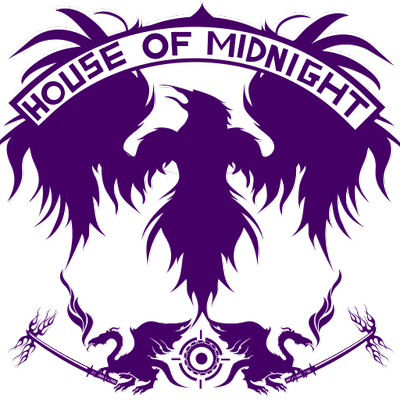
United States
|
|
There is a strong racing culture in California,[7] particularly Southern California. It is considered to be the birthplace of North American drag racing.[28] This area was covered in some depth by magazines[citation needed] such as Turbo and Hi-Tech Performance and Sport Compact Car in the late 1990s.[citation needed]
Florida is also a state known for its street racing scene, especially South Florida. Michael Mann in 1984 while describing the pilot Miami Vice episode coined the "Fast & Furious" phase. Palm Beach, Broward, & Dade County's are the birthplace of the "Fast & Furious" culture itself. South Florida legend states that after a 1986 airing of a Miami Vice episode directed by Rob Cohen called Florence Italy, about New York Street Racers in South Florida racing in the Miami Grand Prix, which in 1986 was still held on Downtown Miami's actual streets, South Florida legend states, a group of South Palm Beach County & North Broward County Teenagers began using their parents sport cars to race on parts of Dixie Hwy between Lake Worth and Ft. Lauderdale, as well as parts of Hwy 441 in Western Palm Beach County, after this Rob Cohen directed Miami Vice episode. This first group was dubbed the 1st generation of South Florida Street Racers, and South Florida legend states this group's "king of the streets" was Dominic Addeo, and featured other well known racers as Rob Van Winkle aka Vanilla Ice, who incorporated the South Florida Street Racing life into his 1990 hit song, Ice, Ice Baby.
Later in the early 1990s, about 1993, South Florida's 2nd generation of South Florida Street Racers exploded onto the scene with the boom of the second muscle car era. Many of South Florida's 2nd generation of South Florida Street Racers were taught to drive by the 1st generation of SFLA Street Racers. One of the most notable of the 2nd Generation of SFLA Street Racers was Sean Tommy Wright, who even today is still well known to many SFLA Street Racers for his escapades around SFLA between 1993 and 1999 and was nicknamed the "Palm Beach County Fury" by Burt Reynolds (the Bandit) for Sean's ability to out-run Palm Beach & Broward County Law Enforcement.
Both the 1st & 2nd generation South Florida Street Racers in the late 1990s served as Rob Cohen's characters for the highly successful Fast & Furious movies. Rob Cohen was a resident of South Florida and was known for using local people as characters, and as example Wilt Chamberlain, Boca Raton Resident appeared on Miami Vice's 2nd season with Mr. Cohen's help & reference. Many of Miami Vice's actors in the late 1980s where actual South Florida residents.
Cohen by his South Florida ties began hearing story's of the South Florida Street Racers and the legend was born.
Today the South Florida Street Racers world is up to Generation 6, and still going strong with members of the prior generations often still involved advocating Racing Safety on SFLA Tracks. Rob Van Winkle aka Vanilla Ice is often seen racing at West Dade County's Track and Palm Beach International Raceway.
More recently Rob Van Winkle, and Sean Tommy Wright's life stories served as part of the character framing for Rick Ross's 2012 hit song "Stay Schemin".
Ever the South Floridian Rick Ross wanted to tell the true South Florida stories of the people leading the fast life, of which Rick Ross himself grew up in.
In complying this piece to promote racing safety I attended the South Florida tracks events and where many South Florida Racers, even at those tracks, said, when, Dominic Addeo, Rob Van Winkle, and Sean Tommy Wright show up at South Florida's 2 tracks, they are still considered the ones to beat.
Racers from the most populated counties (Miami-Dade, Broward, Palm Beach) often uses the local highways such as I-75 or even US-27.
The most commonly used highway stays US-27 because of its city bound location along the swamps of south Florida. It is a Highway mainly used by 18 wheelers to avoid heavy traffic and goes from Miami International Airport as far as Tallahassee. This Highway is also known for its nickname being "the Highway of Death" coming from the fact the surrounding are only swamp, alligators, snakes, and also because it is not a place easy of access for fire-rescue units, ambulances or police.
In some cases, this popularity has led to tough anti-street racing laws which give more strict punishments (including misdemeanors for attending race events) than normal traffic citations and also often involve dedicated anti-racing task forces. San Diego, in Southern California was the first US city to allow the arrest of spectators attending street races.[29] Penalties for violating street racing laws now can include impoundment and even destruction of the offending vehicle and/or the suspension or revocation of the offender's drivers license.[29]
Some police departments in the United States have also undertaken community outreach programs to work with the racing community to educate them to the dangers of street racing, as well as to encourage them to race in sanctioned events. This has also led to a campaign introduced in 2000 called RASR (Racers Against Street Racing) a grass-roots enthusiast group consisting of auto manufacturers, after market parts companies, professional drag racers, sanctioning bodies, race tracks and automotive magazines devoted to promoting the use of safe and legal raceways as an alternative to street racing.[30][31] Kent's Beat the Heat is a typical example of this type of program. Other such alliances have been forged in southern and central California, reducing the incidence of street racing there. Except San Diego, popular racing locations have been Los Angeles, Miami, Long Beach and Fort Lauderdale.
The CNMI (Common Wealth of the Mariana Islands), near Guam, a U.S. territory, had a bill put forth to legalize street racing.[32]
